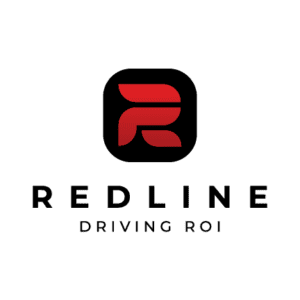How To Audit Your Dealership Website For Performance
Marketing a car dealership isn’t easy, but it’s critical – especially during a drought of leads and inventory – to stay on top of what drives results, and often to double down on those channels. We all know car shoppers are likely to view your website before they ever step foot on the lot, which is why we decided to break down how to audit your dealership website – to evaluate its effectiveness, how it’s driving interest, and the message it’s sending to your customers. Here are some of our most recommended practices for 2022.
Being Modern is Best

Web design has come a long way in the last few years, especially as it comes to mobile-friendliness. Modern site designs often feature clean lines, simple layouts, and lead with information before flashy graphics and animations. Often referred to as having a “flat design”, most modern sites are designed for efficiency, speed, and clear communication over any bells and whistles that may have been popular in the past. This is key when you’re evaluating how your site is functioning for your business.
One of the best ways you can ensure your site is up to date is to use a mobile-optimized template for the overall design. For sites built on WordPress, as an example (a very popular website platform), there are countless templates built for mobile devices first which load quickly and tend to keep information concise while also being engaging and interactive. If updating your template isn’t an option, keep an eye on the total number of pages you have on your site and how much information you’re presenting on each. Keeping this to a minimum can help keep your site from feeling bloated and overwhelming to users.
Also, you could benefit from evaluating your overall website load speeds. This can be measured through tools like Google’s Lighthouse, which evaluates your website’s load speeds for both mobile and desktop, and breaks down ways you can improve them. Best of all, this tool is free and available through the Google Chrome browser natively. Generally speaking, websites that load in less than 3 seconds rank higher in organic search results. That’s the ideal scenario for any dealership site, so faster is better in almost all cases.
Keeping it Simple
User experience, often referred to as “UX”, is absolutely critical to a good website’s navigation. Many web designers have a tendency to overcomplicate a site’s navigation menu and add too many pages, which makes it hard for a user to find their way around. Try to keep in mind how users will end up actually using your site – if there are too many pages to go through, you’ll likely see folks dropping off and heading somewhere else before they get to where you want them to (a lead form, in most cases).
Generally speaking, you want to keep your “main” pages under about 5, so users really understand where they should be looking for info on your dealership and what sets you apart. It’s never a bad idea to provide lots of information about cars and your dealership services, but less is often more when it comes to user experience. “Keep it simple” is a great motto to keep in mind when you’re evaluating your site.
Speed Saves

As mentioned above, the overall time it takes to load your site is a major indicator to search engines like Google on how high-quality the site and its information is. It might seem counterintuitive, especially when photos and video are such an important part of a dealership website. But regardless of how much you have to show, having your site load quickly will tell search engines your site is good and worth showing in early search results.
There are many ways to do this – you can read up on “core web vitals” here (Google’s primary ranking factor over the last year). Lazy-loading images and videos (and other assets) on the site is one very easy way to do this – meaning images don’t try to load before a user scrolls to them. Avoiding heavy “galleries” is a good idea as well, because many of these require that images load before the user sees them, which slows down the site’s overall load speeds. Making sure images are properly sized when you upload them is another easy fix to speed up your site’s load times. Also, be mindful of scripts and CSS files that are in the site but might not need to be, since they will bog down the site’s loading speed with no real benefit. Often, most can be removed from the site without any major consequences. All of this is important because research shows the impact load speeds can have on how your customers behave (for example, 21% of consumers from a recent survey said that slow-loading pages are their main source of dissatisfaction when shopping online).
Mobile-First Every Time

When it comes to the folks visiting your site, the numbers speak for themselves – and mobile devices are where you should be focusing (especially given that as of 2022, almost 53% of all web visits in the US are coming from mobile users).
Generally speaking, designing a website should be done with the mobile user in mind first. This is more than just having a site shrink down on a mobile device, of course. Elements that matter, like images, headlines, and calls-to-action should be designed to stack above and below each other on mobile devices. If this isn’t the case, a mobile user might have a bad experience or even worse, not be able to find what they need on the site (which will lead to them clicking somewhere else).
It’s also best practice to have images resize themselves to adapt to the device being used to view them, because those devices can vary so widely these days. Fortunately, many of the templates we discussed above do this by design, which greatly helps site load speeds. As mentioned, it’s also important to keep your navigation simple, as mobile users often won’t be able to use nested navigation menus very easily. Since images are such an important part of a dealership website, you want to strike a balance between how images look to a user, and how quickly they load on the user’s device. The same goes for navigation – often, less is more.
Content is King
The most important aspect of your site is its content (meaning what you’re saying and how you’re saying it). Keeping your content length in mind can help your site’s ranking, but as in many other things in web design, less can easily be more. Reading difficulty is one factor to consider (there’s a great tool to evaluate this here), but you also should think about the length of a paragraph and a section of site copy.
Descriptions are critical for vehicles on a dealership site, so don’t omit important information about the car itself when monitoring content length. That said, long descriptions coming from the OEM themselves might not be helpful, so try to stick to descriptions about the car itself and not so much on the brand. This way, you’ll have high-quality content users will appreciate and search engines will consider valuable. Vehicle features are super important to cover for shoppers, whereas what makes a brand stand out might not.
Drive with a Strong CTA
Content is critical, but the whole point of writing good content, having good images and videos, and everything else on your site is about the CTA, or “call to action”. These usually lead to a contact form, which is where your users/visitors will be sharing their information and expressing their interest in buying a vehicle. So it’s super important to focus on how you’re asking for their engagement and where.
Bear in mind that many pages on your site might not have strong calls to action, but they should. Inventory listing pages, product-specific detail pages, and contact pages should always have strong calls to action so users know what you want them to do – namely, to give you their contact info and share what they’re interested in. The more frequent and the stronger the messaging behind your calls to action, the higher the likelihood of getting someone’s info which can lead to increased sales. Your website should be your best salesperson so make sure to include strong CTAs in the places you want your customers to act.
The Takeaway:
As we’ve seen, your website is an incredibly powerful sales tool, and one you should spend some time evaluating to make sure it’s sharing the message with visitors that you want it to. Provided you have a modern design that’s mobile-focused, a quick load speed, solid messaging and strong calls-to-action, you should be in good shape. If any of these areas need attention, now is the best time to address them so you present as well as possible to your buying audience.

Redline is dedicated to helping modern dealerships engage, communicate with, and cater to modern, tech savvy car shoppers. Our unique proprietary suite of products and services optimizes and redefines how automotive dealers reach, retain, market, and sell to customers — front end, back end, all ends.

